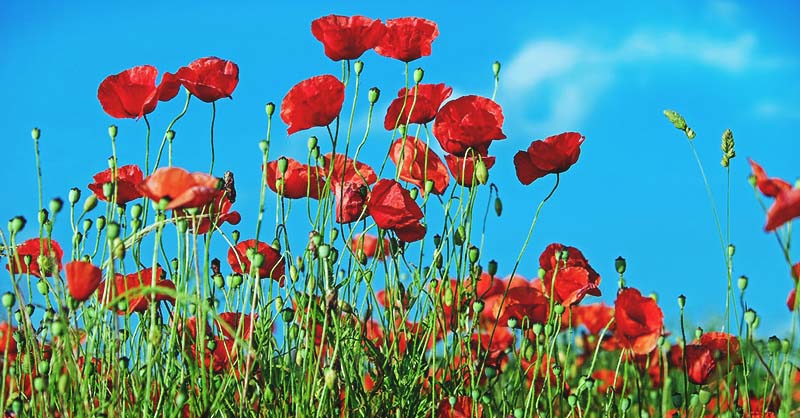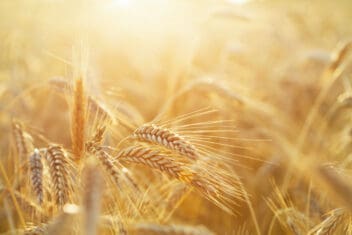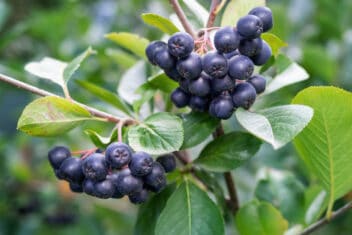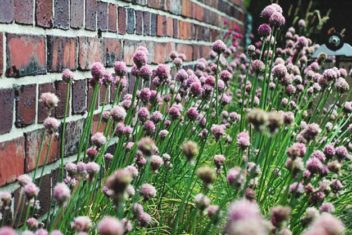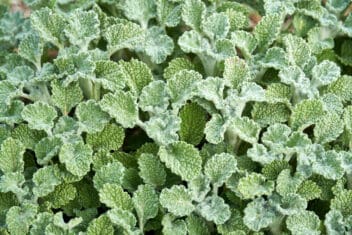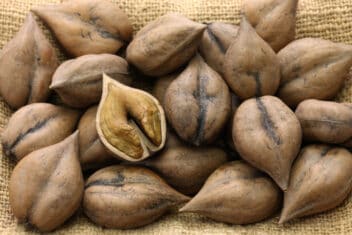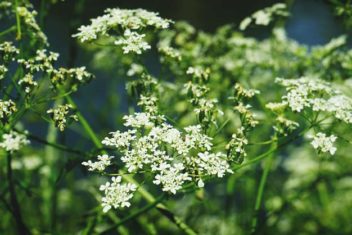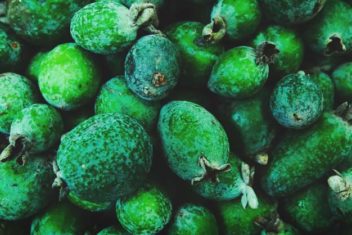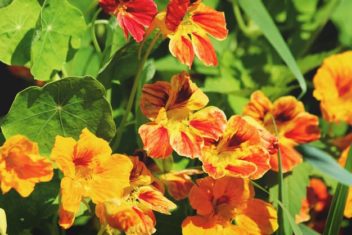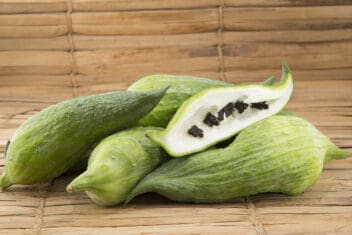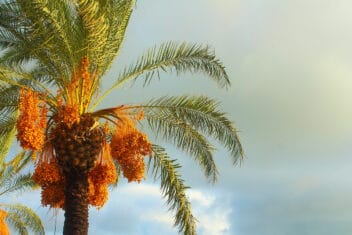I’ve been a culinary herb gardener for most of my adult life. For the past few years, though, I’ve been expanding beyond herbs and mastering the art of growing spices.
To me, spices are a bit more challenging than herbs because you have to grow the plants longer to get a harvest. Many times, it’s the flower buds or seeds that are used as a spice. Whereas, most culinary herbs are made from the leaf parts of the plants before they flower. That means, when you grow spices, you actually get to see your plants flower before you have to start harvesting.
In the case of growing poppies for seeds, the flowers and the seed pods are by far the most beautiful parts of the plants. Growing poppies specifically for the spice is a wonderful way to add to both your spice collection and beautify your homestead garden!
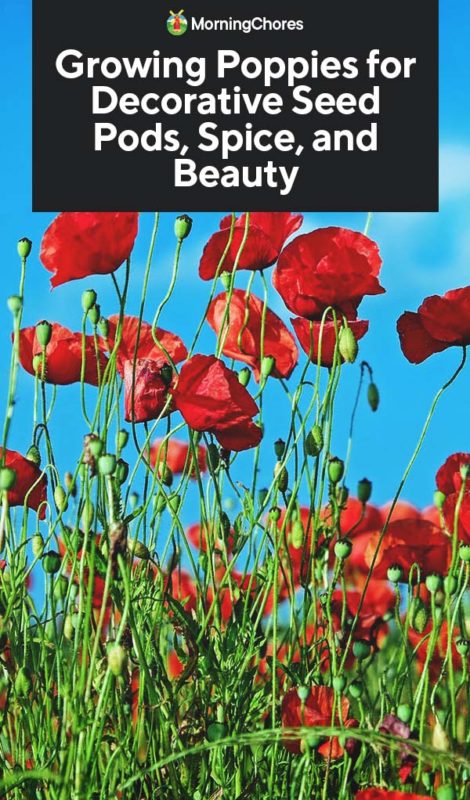
The History of Poppies
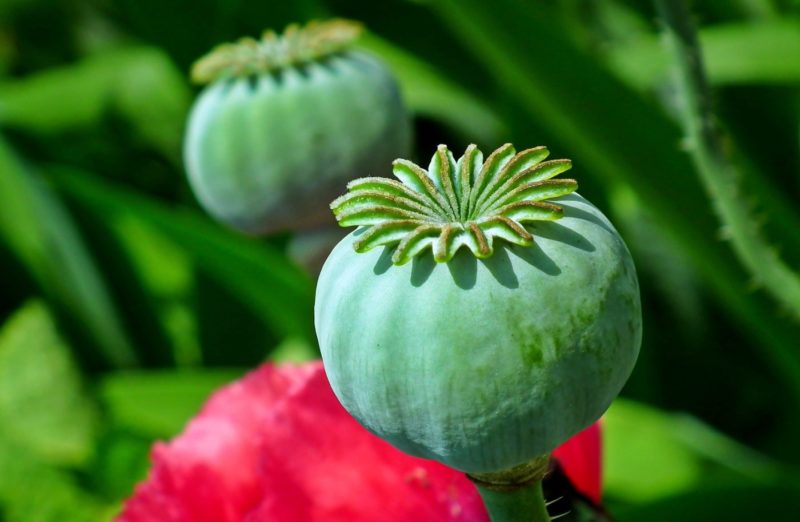
Poppies have a long and colorful history. Early references of using this plant as a medicinal drug date back to Egypt in 3400 B.C. Back then, it was referred to as something that roughly translates into the “joy plant”.
Over the ages, the primary use for poppies has been as a pleasure enhancer or pain reducer. From the opium wars and smoking dens of the 1800s to its condoned use as a medical pain reliever in the form of morphine, poppies have been both revered for their utility and despised for their destructiveness throughout history.
Today, we are facing a poppy-related, opioid crisis that is likely to reverberate through our future history for years to come. This colorful past and present make growing poppies something of a dilemma for gardeners.
Legal Warning!
Poppies and their seed pods can be stunningly beautiful in a garden setting. You can harvest the poppy seeds to use in recipes like lemon poppy seed muffins or on top of homemade “everything” bagels. The seeds can be pressed for oil. Plus, the seed pods are also beautiful in flower arrangements.
If you happen to be of the “prepper” mindset, then growing a regular crop of poppies may also be attractive for other reasons. For example, having a natural and potent pain reliever at the ready in an emergency could be useful.
Be warned though! In the US, growing poppies, particularly in large quantities, can be a bit legally challenging.
As long as you are growing poppies for their beauty or to collect the seeds for cooking, you can probably get away with growing them on your homestead.
However, since some parts of the plant are used for illegal drug production, your motives might be called into question if you grow too many of these plants. (Or if you happen to have a colorful history with the law!)
With that legal warning behind us, let’s talk about growing poppies for their edible seeds.
Poppy Varieties
Opium or breadseed poppies (Papaver somniferum) are most commonly grown for their edible seeds. Corn or common poppies (Papaver rhoeas) are sometimes also used for their seeds.
Additionally, there are many other members of the poppy family explicitly grown for their flowers that may also produce edible seeds. For example, Plants for a Future (PFAF) lists Icelandic Poppies (Papaver nudicaule) and Oriental Poppies (Papaver orientale) as having edible seeds. However, for this post, we’ll focus primarily on Papaver somniferum varieties for optimal culinary seed production.
Breadseed Poppies
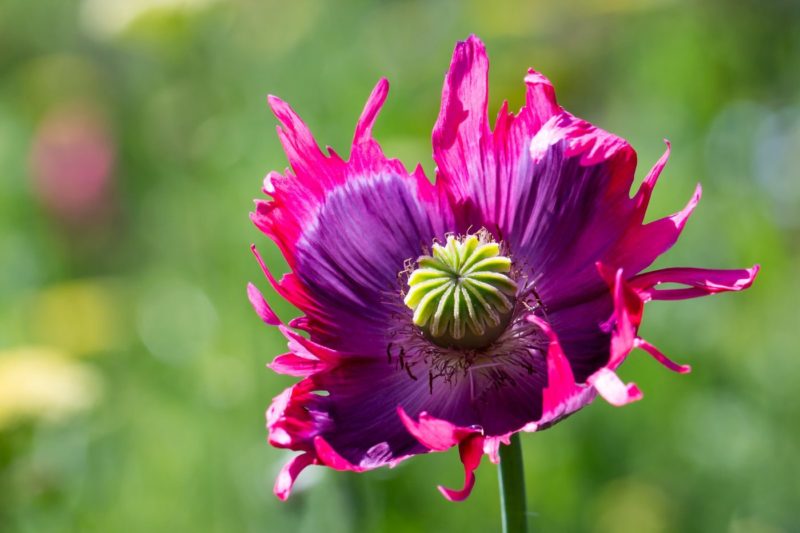
Breadseed poppies (Papaver somniferum) are annual or tender perennial plants that readily self-seed if seed pods are allowed to overwinter on the stems. These are also the poppy used in agriculture for seed production. Additionally, the large seed pods are often used in floral arrangements.
Cultivars to Consider
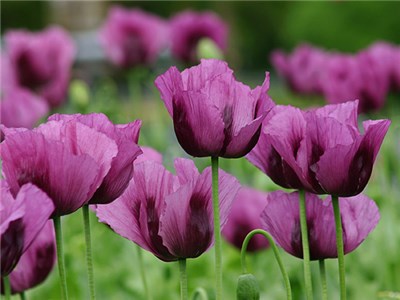
Hungarian – These poppies can range in color from white to deep blue or purple. These are the easiest to find and most commonly used cultivar for heavy seed production.
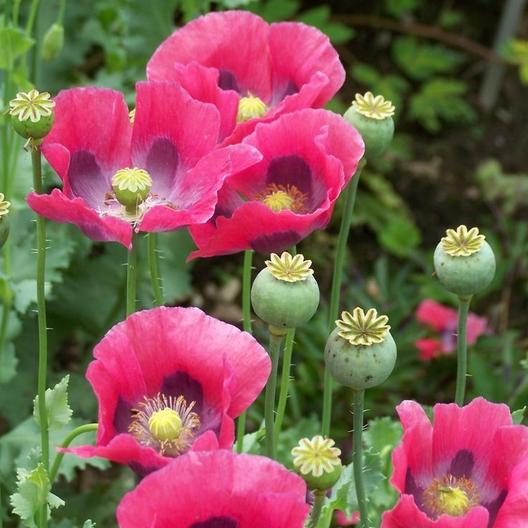
Pepperbox – These poppies have pale to deep pink or red petals with purple interiors. They are sometimes called the florist’s pepperbox because the seed pods have a beautiful robin’s egg blue appearance.
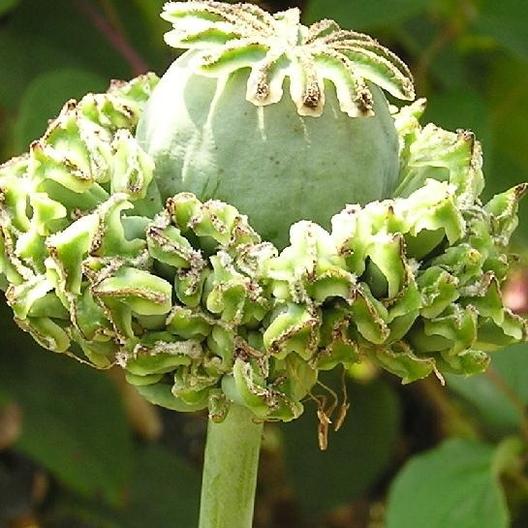
Hens and Chicks – These poppies are similar in appearance to Pepperbox poppies though not usually as stunning. However, the seed pods have a large center pod surrounded by smaller side pods that suggest the appearance of a mother hen with her chicks.
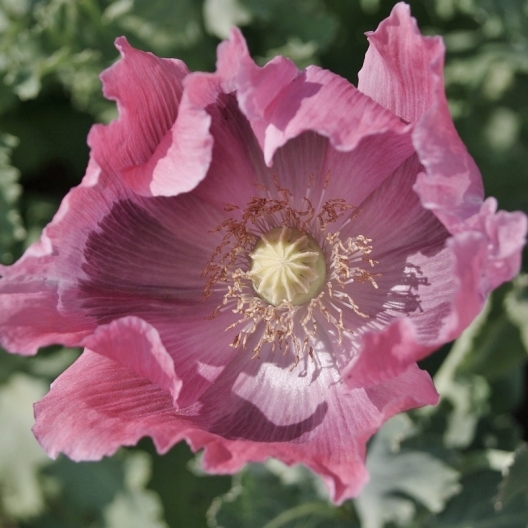
The Giant – These poppies are big double blooms that can range from pale to deep pink. The seed pods hint at pink as well.
Peony, Pom Pom, or Carnation Poppies
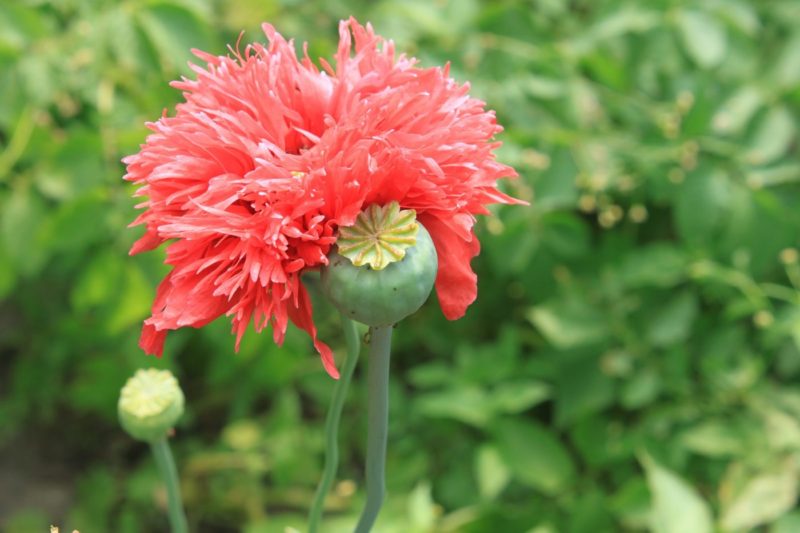
Peony, pom pom, or carnation poppies are cultivars of Papaver somniferum that have been cultivated specifically for their ornamental flowers. They generally have double or giant blooms that make them more appealing as a border flower than production Breadseed Poppy varieties detailed in the prior section.
Because these poppies have been bred as ornamentals, and have lower levels of the illegal alkaloids used for drug-making, these are generally considered less of a legal risk for home growers.
If you’d like to consider growing ornamental poppies for seeds to limit your legal liability, there are all sorts of beautiful choices. Flemish Antique, Candy Floss, Pink Frizz, Black Swan, Frosted Salmon, and Whitecloud are some of the more popular and easier to grow options.
Poppy Planting
Planting poppies is about the difficulty level of planting something like dandelions in a lawn. In other words, they grow like weeds in fertile, well-draining soil. However, when growing them as a spice there are some tricks that you can use to better control your harvests.
USDA Zones
Most poppies, cultivated for their edible seeds, can be planted in USDA planting zones 3-9. Certain varieties may have narrower zone tolerance though.
Make sure to confirm zone suitability with your seed supply source.
Sun Requirements
Poppies can grow in both sun and part shade. However, for best production, at least 6 hours full sun is needed.
In hot climates, some afternoon shade can reduce stress on plants and increase your likelihood of growing large seed pods.
Soil Requirements
Poppies grown for seed can grow in a wide range of soils from agricultural fields to roadsides. You can also grow them in garden beds as long as it is not overly fertile in the top couple inches.
Excellent drainage is key for seed production as poppies prefer soil that is on the dry side. Heavy clay soils, or overly silty soils in wet areas, can be a problem for poppies.
Incorporate long-aged, complex compost, or leaf mold into the top 2 feet of soil to improve drainage before planting if necessary.
Seed Starting
Breadseed poppies are taprooted. That means they generally do not transplant well. So, directly seeding where the plants will grow is best.
If you do attempt to transplant poppies, water in the morning and evening to help plants establish until you see the leaves begin to grow again. Also, expect that your plants and seed pods will be smaller if you transplant seedlings. You may want to plant extra to make up the production difference.
Seeds germinate better after natural stratification such as planting in fall or winter and allowing seeds to germinate naturally in spring. You can also stratify seeds in the fridge or freezer.
For best results, scatter seeds over the surface of your planting area from late fall up to a few weeks before your last frost date. Heavily seed and thin later to ensure optimal germination rates. The seeds will germinate as soon as conditions are ideal for plant production, which is typically when the soil reaches 50-60°F.
Spacing
Most commercial guidelines suggest plant spacing of 4-inches apart in 1-foot rows for mechanical cultivation. For use in flower beds, planting as part of a mixed flower bed is recommended and allowing 1 foot of space per plant is frequently recommended.
I have personally had the highest production when plants are spaced about 4 inches apart on 6-8 inch rows in blocks that are about 3 to 4 feet wide in good garden soil.
Poppy Care
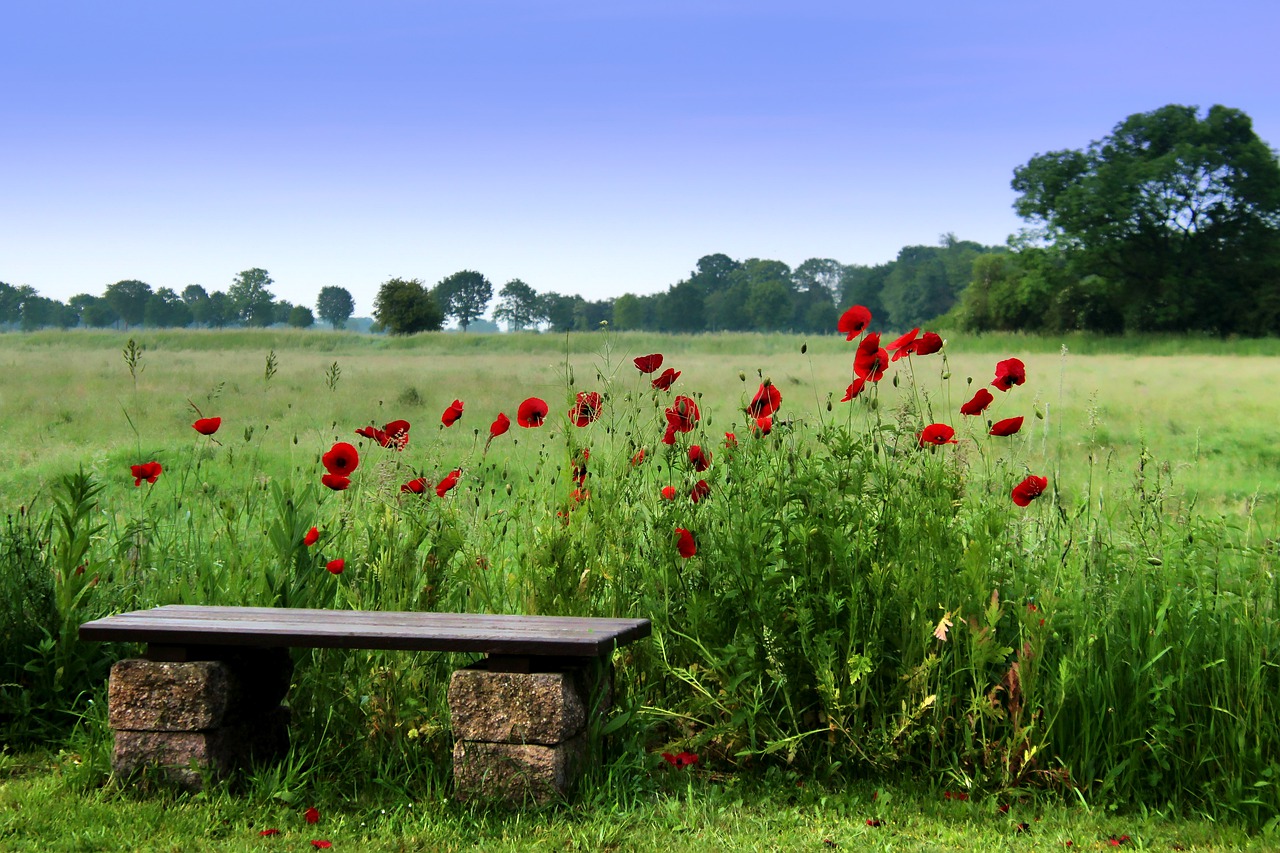
Poppies are very low maintenance. They germinate in cold temperatures and can withstand some frost. However, the flowers will die in a hard freeze. So if your flowers are at risk of freezing, you may need to cover them with row covers temporarily.
Watering
Poppies grow well in drier soil. However, they do need occasional watering. In extended hot or dry weather, make sure plants get the equivalent to 1/2-3/4 inches of rain per week. Also, keep the soil moist for young plants.
Weeding and Mulching
Poppies can typically hold their own against most common weeds once established. However, for the first month and a half after seedlings emerge, you’ll want to keep your beds clear of weeds.
Do not mulch over poppy seeds or they will not germinate. However, you can mulch around the planting zone after seedlings emerge to help reduce weed pressure.
Fertilizing
Poppies grow best for seed production in soil that is fertile from the addition of organic matter, but not overly fertilized with fast-release nutrients. If you are growing poppies for seeds in your vegetable garden, planting them after heavy feeders in your crop rotation works well.
Do not plant poppies for seeds in soil that has high fertility in only the top few inches of soil or the taproot may be stunted and the plant will be subject to greater risk for fungal disease or falling over before the seed heads are ready for harvest.
Plants will perform best in soil that has been prepared to at least a foot in depth using methods like double digging or deep-tilling.
Cross-pollination
If you want to save your seeds to plant, as well as eat, make sure to keep your varieties separate to avoid cross-pollination issues. Since poppies are generally self-fertile, a distance of 2000 feet between varieties may be sufficient for small crops. However, a larger distance between varieties is recommended for best results.
Alternatively, you can watch for the flowers to open and use a paintbrush to expedite self-pollination for the plants you plan to save seeds from. Then, cover the flowers with paper bags for a couple of days to prevent possible cross-pollination.
Seed Pod Care
When growing poppies for flowers, you will deadhead them after bloom and can cut plants to the ground when they begin to yellow.
When growing for seeds, though, you need to make sure the plants remain healthy until the seed pods have fully plumped. I maintain fertility and moisture levels in the soil and monitor the health of my plants closely until the seed pods begin to dry.
Common Problems
Overall poppies are a very low-maintenance plant with few pest or disease problems. However, there are a few things to look out for.
Fungal Pathogens
Because poppies are adapted to drier soils, they are subject to fungal pathogens such as botrytis, downy mildew, and Pythium root rot in overly wet conditions.
Avoid irrigation, except in excessively dry or hot periods, and plant in soil with good drainage to avoid these issues.
Mosaic Virus
The Tobacco Mosiac and Papaver Mosiac Virus are possible problems for poppy plants. There is not much you can do in terms of treating infected plants. However, do not replant seeds saved from infected plants and avoid planting other susceptible plants in that contaminated area in the future.
Manganese Overload
Poppies can tolerate soil pH ranges from 5.5 – 7.5. However, poppy plants are susceptible to root stunting from excessive manganese in the soil at lower pH ranges.
To slow manganese uptake, ensure that the soil pH is closer to the 7.5 in soils that have excess manganese.
Boron Deficiency
Similar to cabbage and broccoli, poppies are more susceptible to disease if they do not have sufficient boron. Boron can be toxic to your soil if over applied. So, if you suspect boron deficiency in your soil, have a professional soil test done and use application rates per your test results.
Insects
Poppies grown in ideal conditions usually have very few insect problems. However, there are a few to watch out for if plants get stressed.
- Aphids – Aphids are generally found in large groupings on the stems of plants. They are often accompanied by ants who enjoy their sweet frass. Remove them by rubbing them gently off the plant parts with soapy water.
- Thrips – Thrips are tiny insects that dine on the undersides of leaves. You can look for them on the undersides of pale-colored, paper looking leaves. They are hard to control. Luckily, their damage tends to be mostly cosmetic. Remove infested leaves or whole plants as needed to prevent population increases.
- Spittlebugs – Spittlebugs are usually identified for the spittle-looking mass of eggs they leave on the underside of leaves and around plant stems. Their damage tends to be minimal, so control is not usually necessary. However, you can use water to remove the larva to keep populations in check.
Companion Planting
Best Companions
Poppies are excellent pollinator attracting plants. As such, they are lovely to plant in and around your vegetable garden. Generally though, they like to grow in their own space, among the company of other poppies, or as part of a mixed flower bed.
Worst Companions
Poppies are taprooted fertility scavengers. As such, you should avoid planting them near other taprooted scavengers such as lambsquarters, carrots, parsnips, or potatoes. Additionally, because they can be a bit aggressive in finding nutrients, you may not want to plant them in a bed with vegetables as a general rule.
Harvesting and Storing
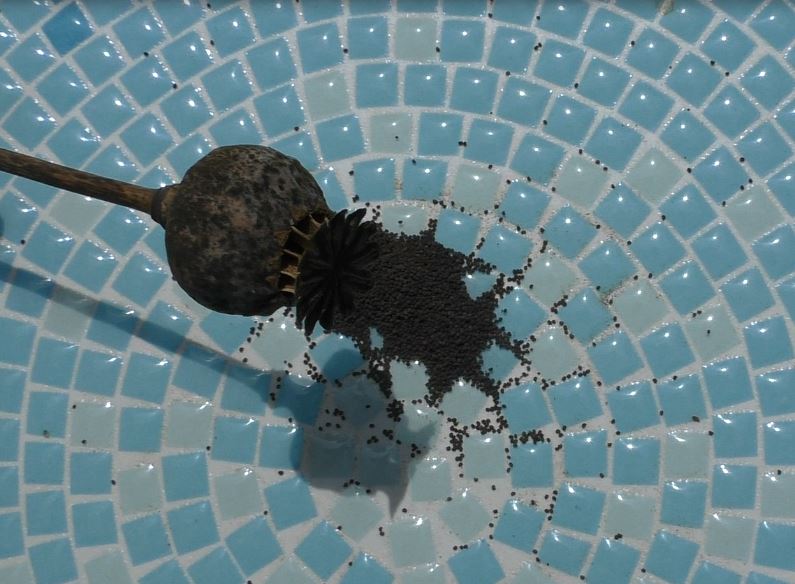
The seed pods are ready to harvest when the star-like cap at the top of the pod begins to separate from the bowl portion. At this point, you can pour the seeds out through the vents under the cap into your storage container.
If you are worried about self-seeding or mold during wet weather, you can harvest the seed pods as soon as they are no longer green and show signs of browning. Hang them upside down inside a paper bag until the seeds fall out into the bag.
Allow your seeds to dry for a few days before closing your container.

